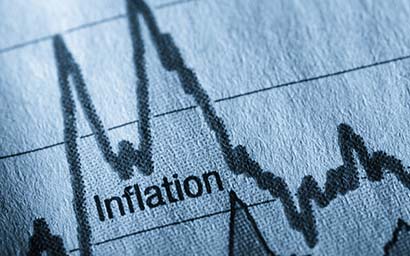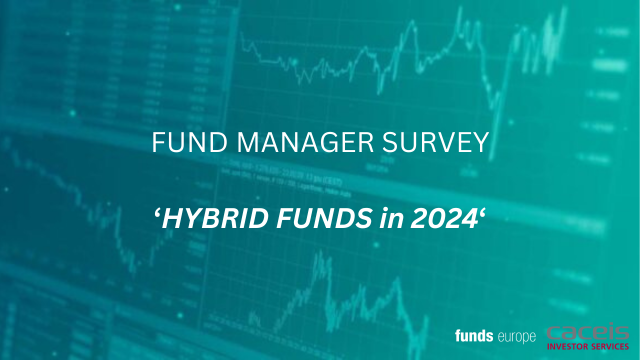The worldwide trend, fuelled by energy costs and goods shortages, has strengthened fund flows towards inflation-related ETFs.
Inflation, which has recently seen worryingly strong growth, poses a threat to bondholders. Investors holding bonds for income will see inflation erode their returns from fixed interest investments and, ultimately, their purchasing power.
Official figures from the Bureau of Labor Statistics revealed that inflation in the US surged by 7% in the 12 months to December last year. It was the highest year-on-year rise in inflation since 1981, when Ronald Reagan was the newly elected president of the United States and Raiders of the Lost Ark was packing out cinemas.
A common protection against inflation is to buy US Treasury Inflation-Protected Securities (TIPS), created post-Reagan in 1997. Interest payments from TIPS tailor themselves to any rise in inflation, making TIPS effective for managing price-hike-related losses in other parts of a portfolio.
Investors seeking inflation protection from ETFs that invest in TIPs were partly responsible for US$2.3 billion (€2 billion) of inflows to inflation-linked ETFs in December. TIPS were about 71% of inflation-linked ETF assets under management (AuM). In all, AuM for inflation-related ETFs totalled $103.3 billion.
Yet there are risks. TIPS are usually more expensive than conventional Treasury bonds, which means their yields are lower given the inverse relationship between bond prices and yields.
According to Bloomberg, on February 8 this year, five-year TIPS bonds had a negative yield of -1.02%, in contrast to a conventional five-year Treasury bond, which paid 1.79%.
If deflation occurs, another problem is created for holders of TIPS: interest rate payments will adjust themselves downwards if the consumer price index becomes negative.
So, how have inflation linked ETFs performed, considering the huge rises in US inflation?
Michael John Lytle, the CEO of Tabula Investment Management, says that according to Bloomberg data, a portfolio of TIPS returned 15.7%, while a US ‘inflations expectations’ portfolio gained 21.7%. Meanwhile, the Bloomberg United States Enhanced Inflation Index, the reference index for Tabula’s US Enhanced Inflation Ucits ETF, rose 38.6% over the past 21 months.
The fund aims to directly replicate the index, combining the performance of TIPS and the US seven-to-ten-year Breakeven Inflation Rate. Lytle says that the ETF grew from $14 million at the beginning of 2021, to end the year with $100 million of AuM. Its European-listed inflation-linked ETFs grew 40% during 2021, adding almost $8 billion of net new assets.
Europe has the second-largest inflation-linked ETF market according to ETFGI, with $28.4 billion of AuM. This accounts for 21.2% of the market, even though Europe currently has six more inflation-related ETF funds than the US.
Sidi Kleefeld, head of ETF advisory sales at DWS, says the firm has seen solid inflows for its inflation-linked bond ETFs, such as the Eurozone Inflation-Linked Bond Ucits ETF. In total there has been approximately €640 million in net new assets over the past 12 months, for the most part allocated to DWS’s euro inflation-linked products.
“With inflation expectations rising, the price performance of both our eurozone and global inflation bond ETFs were solid throughout the year, up 5.5% in 2021. From a construction side, inflation bonds have a longer duration, and so started weakening with the shift in interest rates,” says Kleefeld.
Product launches remain stable
Overall, there is little evidence of a significant increase of inflation-linked ETF products. Antoine Lesné, State Street’s regional head of SPDR ETF strategy and research in Europe, the Middle East and Africa, says the effect on product launches was not significant.
The current roster of funds giving exposure to US, European or global inflation were mostly already in existence. Just one new fund was directed towards US TIPS last year in the European market. But Lesné does say that flows into inflation-linked ETFs in the US saw some of the already very large funds grow to more than $10 billion, which in some cases was growth of 25%.
It can be more significant for smaller new funds, and the environment has clearly been helpful.
Lesné adds: “If you think of the money that has gone into fixed income in Europe in the ETF market, net new flows reached $44 billion in 2021, and roughly $7 billion went into inflation-linked bond ETFs. This is not bad, considering that inflation-related bonds are not a core investment strategy in a portfolio.”
Going into 2021, there were 24 European-listed, inflation-linked ETFs, with exposures including global inflation, euro inflation and TIPS.
DWS’s Kleefeld points out that equities, gold and commodities have historically been beneficiaries of a higher inflation regime. Investors may, therefore, use equity ETFs and exchange-traded commodities to position themselves for inflation.
Globally, the International Monetary Fund projects that inflation will climb to 3.8% this year, before decreasing to 3.1% in 2023. In the advanced economies, inflation will fall year on year by 0.4% to 1.9% next year.
After the Federal Reserve revised its expectations last December, policymakers believe that US inflation will be 2.6% this year, an increase of 0.4% on last September’s forecast. It is anticipated to fall to 2.3% next year, then to 2.1% in 2024.
As the Fed moves to counteract inflation, investors will need to protect against a rising interest rate environment, as well as the continued threat of higher inflation itself. High energy prices alongside supply chain constraints are likely to result in transitory inflationary forces in the short to medium term.
Tabula’s Lytle says: “It is clear that we are no longer in an environment where central banks attempt to increase inflation. Higher and more persistent inflation needs to be addressed with monetary policy tightening.”
It may be prudent for investors to look beyond US TIPS as part of their inflation hedging strategies this year, he adds.
The situation now unfolding will ask questions of traditional inflation ETFs, where investors must choose between realised inflation and inflation expectations.
Simeon Hyman, global investment strategist at ProShares, which offers an “inflation expectations” ETF, says rising interest rates and inflation typically go hand in hand with an improving economy when corporate bonds have a lower default risk. So, isolating credit risk and protecting from rising rates makes sense.
“And remember that even if inflation risks recede, United States Treasury rates are still likely to rise because of the end of quantitative easing and the unwinding of the Federal Reserve’s balance sheet,” Hyman adds.
© 2022 funds europe





